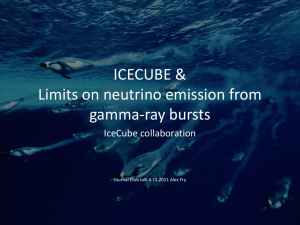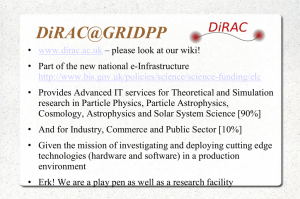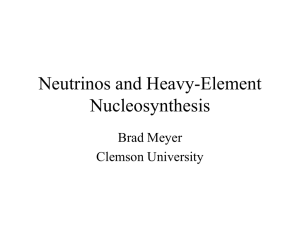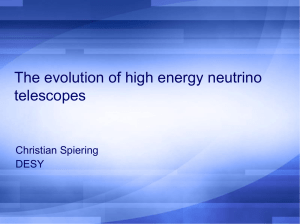Massive neutrinos
advertisement
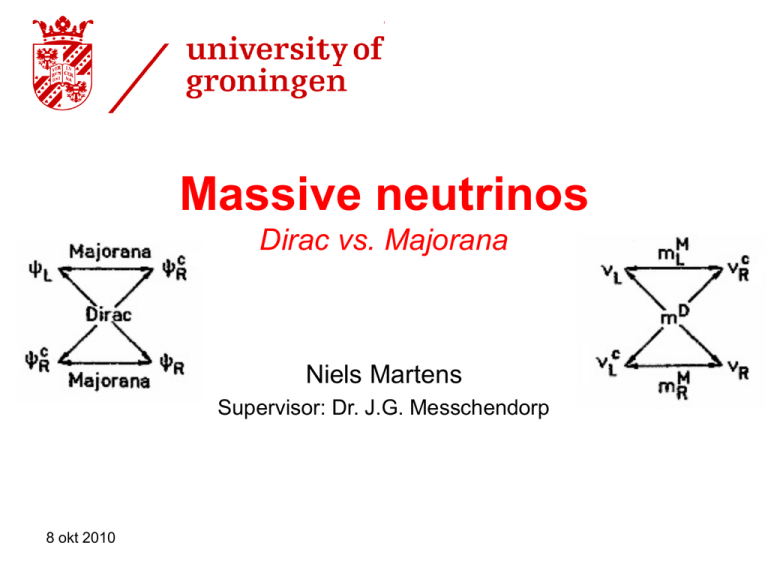
Massive neutrinos Dirac vs. Majorana Niels Martens Supervisor: Dr. J.G. Messchendorp 8 okt 2010 Introduction Introduction Outline • Introduction – Helicity – Chirality – Parity violation in weak interactions • Theory – SM: massless lefthanded neutrinos – Massive neutrinos • • • • Dirac mass Majorana mass Dirac-Majorana mass terms Possible scenarios • Experiments – Neutrinoless double beta decay • Results Heidelberg-Moscow cooperation 2 Introduction Introduction Helicity & Chirality • Helicity: projection of spin in the direction of momentum • Ill-defined when m≠0 (Lorentz transformation) Chirality states (eigenstates of weak interaction): superposition of helicity states 3 Introduction Introduction Parity violation in weak interactions • Parity operation: x -x • V -V • AA • Goldhaber experiment (1957): measuring neutrino helicity • Electron capture in 152Eu e 152Eu152Sm e • Two co-linear events of opposite parity expected: 4 Introduction Introduction Parity violation in weak interactions P • Only lefthanded photons observed only lefthanded neutrinos • Later experiments: only righthanded anti-neutrinos 5 Theory Neutrinos in the Standard Model • Fermion; spin-½ • Massless • only lefthanded neutrinos, righthanded anti-neutrinos 6 Theory Neutrinos in the standard model • Massless spin-½ particles are described by the Dirac eqation for massless particles: i L 0 i 0 i R 0 p p R, L R, L 7 Theory Massive neutrinos – Dirac neutrino • Flavour oscillations (small) neutrino mass!! • How to incorporate this in SM/ extend SM? (1) Dirac mass (i mD ) 0 i L m R i R m L Boost can change handedness coupling between two helicity states A single four-component spinor 8 Theory Massive neutrinos – Dirac neutrino • Dirac mass term in Lagrangian LMass mD mD ( L R )( L R ) mD ( L R R L ) • What other mass terms are possible? 9 Theory Massive neutrinos – Majorana neutrino (2) Majorana mass L Mass L c 1 c mL ( L R R L ) 2 R Mass L c 1 mR ( L R R Lc ) 2 • Neutrino is chargeless, so it can be its own antiparticle mM couples particle and antiparticle 10 Theory General case: Dirac-Majorana-mass (3) Dirac-Majorana mass term c c 2L mD ( L R L ) mL L mR L R h.c. c L, L mL mD c R mD mR c R Rc h.c. R • Diagonalizing M gives two mass eigenvalues: m1, 2 1 (mL mR ) (mL mR ) 2 4mD2 2 11 Theory Different scenarios m1, 2 1 (mL mR ) (mL mR ) 2 4mD2 2 (a) mL mR 0 m1,2 mD : pure Dirac case (Dirac field) (b) mD 0 m1, 2 mL, R : pure Majorana case c c , 1 L R 2 R L 12 Theory Different scenarios (c) Seesaw model mR mD ; mL 0 mD2 mD2 m1 ; m2 mR 1 2 mR mR mR • Explains: 1 L Rc , 2 Lc R – light mass of neutrinos – the experimental fact that only lefthanded neutrinos couple to the weak interaction. 13 Experiments Related experiments • Tritium β-decay • Flavor oscillations • Neutrinoless double β-decay 14 Experiments Neutrinoless double β-decay • β—decay: n p e e • Double β--decay: ( A, Z ) ( A, Z 2) 2e 2 e • Could any nucleus be used? No: * M N ( A,Z ) M N ( A,Z 2) 2me 2m e * Single β-decay must be forbidden M N ( A,Z ) M N ( A,Z 1) me 15 Experiments Neutrinoless double β-decay • Semi-empirical mass/Weizsäcker formula: 16 Experiments Neutrinoless double β-decay • 35 naturally occurring isotopes which decay via 2β , all even-even 17 Experiments Neutrinoless double β-decay - • So how can 2β show that the neutrino is a majorana particle? Neutrinoless double beta decay ( A, Z ) ( A, Z 2) 2e X 2 e 18 Experiments Neutrinoless double β-decay • 2 necessary conditions: – Particle-antiparticle matching – Helicity matching m 0 Virtual neutrino line e M Mass L c c 1 1 c c mL ( L R R L ) mR ( R L L R ) 2 2 • If neutrinoless double β-decay occurs, the neutrino is a massive majorana particle. 19 Experiments Neutrinoless double β-decay • Experimental signatures: – Two e- from same place at same time – Daughter nucleus (Z+2,A) – Neutrinoless case: sharp defined kinetic energy of electrons, instead of continuous spectrum 20 Experiments Neutrinoless double β-decay 1 2 2 M m T1/ 2 • Theoretical uncertainty (76Ge): 1.5 < |M| < 4.6 • Half-lives • β : from seconds to 105 y • 2νββ: ~1020 y • 0 νββ: > 1025 y • mν ~ 50 meV 100 kg needed for 1 event/y 21 Experiments Neutrinoless double β-decay • Experimental difficulties: – Count rate: How to measure T1/2 beyond 1025 y!? – Source strength: expensive! – Background: Cosmic rays, 2νββ, natural radioactive decay – Energy resolution 22 Experiments Heidelberg-Moscow Experiment Source strength 11,0 kg enriched 76Ge: Source = detector Background find a mountain and dig a hole Enormous half-lives experiment run from 1990 till 2003 (but, stability then becomes a problem) 23 Experiments Heidelberg-Moscow experiment 24 Conclusions • None… yet • Since neutrinos do have mass, the SM has to be extended. • Theoretically, massive neutrinos can have a Dirac and/or Majorana nature. • Reliable 0νββ observations would prove that the neutrino is a Majorana particle and give the neutrino mass, but at the moment 0νββexperiments face many difficulties. 25 Bibliography • C. Giunti & C.W. Kim, Fundamentals of neutrino physics and astrophycis, Oxford University Press, 2007 • K. Zuber, Neutrino Physics, IOP Publishing, 2004 • H.V. Klapdor-Kleingrothaus et al. / Physics Letters B 586 (2004) 198–212 26
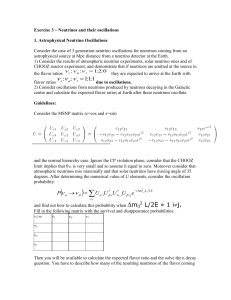

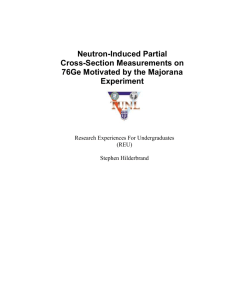
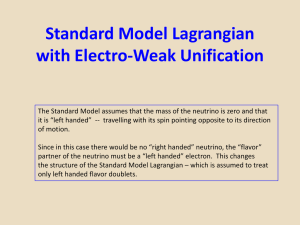
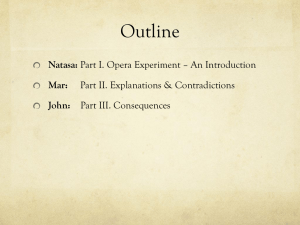
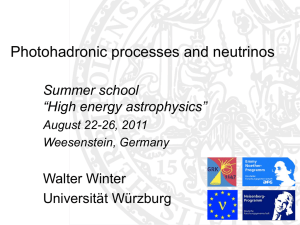
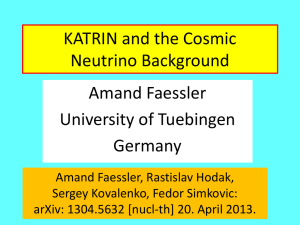
![slides [ppt] - Latsis Symposium 2013](http://s2.studylib.net/store/data/005775657_1-59a6bcb8e3e83e4e7dc3b73bb4fc9b7e-300x300.png)
